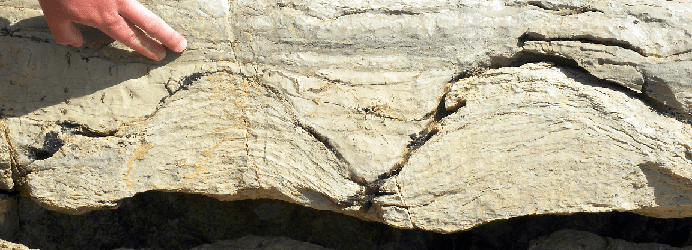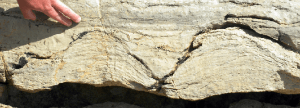With the help of a team from the Chinese Academy of Sciences, Virginia Tech geobiologist Shuhai Xiao discovered fossils of some of the earliest known complex multicellular eukaryotes. The multicellular organisms found in the fossils from that time period, 600 million years ago, are more complex than expected (1).
The first known example of multicellular eukaryotes dates back 1.2 billion years, but more “complex” life, with qualities similar to animals and plants, did not arrive until the Cambrian explosion which began around 542 million years ago, 60 million years after the Virginia Tech fossil. During the Cambrian Explosion, most of the diversity of complex life seen today formed, including most major animal phyla (2).
Xiao sought to examine the questions of why and how multicellular life evolved from unicellular life. He and his team studied rocks from the DouShanTuo Formation, a sedimentary deposit located in central GuiZhou province, China (1). It is known for its exceptionally preserved fossils from just before the Cambrian explosion (3).
The fossils Xiao found had several properties that, despite their age, make them similar to more complex organisms, such as animals and plants. These properties include cell-cell adhesion, or cells attaching to other cells’ extracellular matrices, differentiation, or specialization of cell tasks, and programmed cell death (4).
What does this discovery mean? First, it provides new information regarding how unicellular eukaryotes organized to form complex multicellular organisms, in addition to new thinking about the time of the transition. Scientists do not know what organism(s) the fossils represent, but one hypothesis posits that it is a transitional organism to either early animals or multicellular algae (1).
Going forward, Xiao’s research will focus on the life cycle of these fossils to better understand them (1).
Sources:
1. Bushey, Rosaire. “New evidence of ancient multicellular life sets evolutionary timeline back 60 million years.” Virginia Tech News. N.p., 25 Sept. 2014. Web. 1 Oct. 2014. <http://www.vtnews.vt.edu/>.
2. “Understanding Evolution.” Cambrian Explosion. N.p., n.d. Web. 1 Oct. 2014. <http://evolution.berkeley.edu/>.
3. “DouShanTuo Formation.” Fossils Geological Time and Evolution. N.p., n.d. Web. 1 Oct. 2014. <http://www.fossilmuseum.net/>.
4. “Cell Adhesion [Def 1].” Life Science Reference. N.p., n.d. Web. 29 Sept. 2014. <http://www.biology-online.org/>.


Leave a Reply